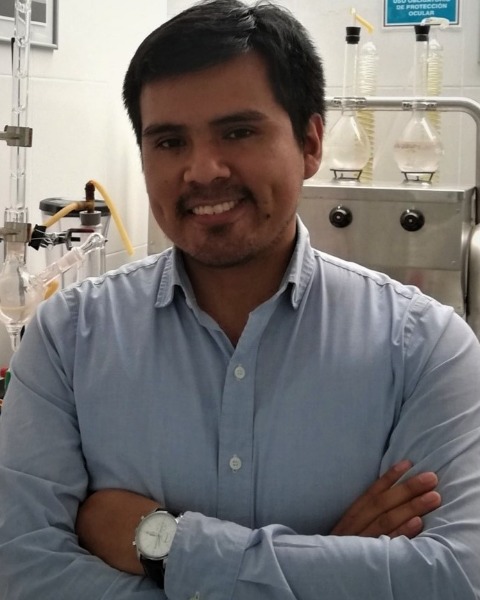COVID-19
Session: Poster Session A
(106) FACTORS ASSOCIATED WITH SELF-MEDICATION DURING THE COVID-19 PANDEMIC IN CHINCHA – PERU: A CROSS-SECTIONAL STUDY
Friday, August 25, 2023
8:00 AM - 6:00 PM ADT
Location: Convention Hall
Publication Number: 443

Jose Fernando Salvador Carrillo, PharmD
Researcher
Escuela de Medicina Humana, Universidad Privada San Juan Bautista, Filial de Chincha. Lima, Peru
Lima, Peru
Presenting Author(s)
Background: Peru was one of the countries most affected by COVID-19 and Chincha was the epicenter of the COVID-19 repercussion in this country. This city reported one of the highest mortality rates among all cities in Peru. This scenario could encourage this population to self-medicate; however, there are no studies that have previously evaluated this problem in this community.
Objectives: The aim of this study was to assess the practices and associated factors of self-medication (SM) during COVID-19 in Chincha, Peru.
Methods: We conducted a cross-sectional study between January and March 2021 among the Chincha population, Peru. Participants were invited through social networks and the recommendations of CHERRIES were followed as much as possible. Convenience sampling was performed to reach the sample size. The inclusion criteria were participants over 18 years of age, who resided in this city and who adequately completed the questionnaire. Chi-square tests were conducted to explore contributing factors for SM during COVID-19, while a robust Poisson regression model was run to evaluate the significant association. Prevalence ratios (PR) with 95% confidence interval (CI), and p< 0.05 were used to determine statistical significance.
Results: A total of 300 participants (33.0 ± 14.5 yo) were included in this study. The majority of the respondents were women, 63.7% (n=191). The frequency of SM was 48.7% (n=146). Among self-medicated participants, the most widely used non-prescribed drug was ivermectin (84.2%, n=123), the main reason to self-medicate was poor access to quality healthcare (48.63%; n=71), most of the participants (56.2%; n=82) frequently found these drugs out of stock when they tried to acquire them, and we find that some participants gave these drugs to vulnerable populations (to elderly: 18.5%; n=27 and children: 13.0%; n=19). In the multivariate analysis, we found that being female was a protective factor (p=0.003; PR: 0.70; 95% CI: 0.55-0.89). On the other hand, factors associated with self-medication were incomplete schooling (p < 0.001; PR: 1.8; 95% CI: 1.35-2.44), symptoms of COVID-19 with no confirmed diagnostic (p=0.001; PR:1.6; 95% CI: 1.20-2.17) and negative diagnostic (p=0.046; PR:1.5; 95% CI: 1.01-2.17), and if participants were often exposed to misinformation about COVID-19 treatments against COVID-19 (p=0.045; PR: 1.3; 95% CI: 1.01-1.62).
Conclusions: SM practices were observed at alarming level among Chincha's inhabitants. The factors associated with SM reported in this study deserve special attention to improve our understanding of the complex scenario in which this population lived during the COVID-19 pandemic.
Objectives: The aim of this study was to assess the practices and associated factors of self-medication (SM) during COVID-19 in Chincha, Peru.
Methods: We conducted a cross-sectional study between January and March 2021 among the Chincha population, Peru. Participants were invited through social networks and the recommendations of CHERRIES were followed as much as possible. Convenience sampling was performed to reach the sample size. The inclusion criteria were participants over 18 years of age, who resided in this city and who adequately completed the questionnaire. Chi-square tests were conducted to explore contributing factors for SM during COVID-19, while a robust Poisson regression model was run to evaluate the significant association. Prevalence ratios (PR) with 95% confidence interval (CI), and p< 0.05 were used to determine statistical significance.
Results: A total of 300 participants (33.0 ± 14.5 yo) were included in this study. The majority of the respondents were women, 63.7% (n=191). The frequency of SM was 48.7% (n=146). Among self-medicated participants, the most widely used non-prescribed drug was ivermectin (84.2%, n=123), the main reason to self-medicate was poor access to quality healthcare (48.63%; n=71), most of the participants (56.2%; n=82) frequently found these drugs out of stock when they tried to acquire them, and we find that some participants gave these drugs to vulnerable populations (to elderly: 18.5%; n=27 and children: 13.0%; n=19). In the multivariate analysis, we found that being female was a protective factor (p=0.003; PR: 0.70; 95% CI: 0.55-0.89). On the other hand, factors associated with self-medication were incomplete schooling (p < 0.001; PR: 1.8; 95% CI: 1.35-2.44), symptoms of COVID-19 with no confirmed diagnostic (p=0.001; PR:1.6; 95% CI: 1.20-2.17) and negative diagnostic (p=0.046; PR:1.5; 95% CI: 1.01-2.17), and if participants were often exposed to misinformation about COVID-19 treatments against COVID-19 (p=0.045; PR: 1.3; 95% CI: 1.01-1.62).
Conclusions: SM practices were observed at alarming level among Chincha's inhabitants. The factors associated with SM reported in this study deserve special attention to improve our understanding of the complex scenario in which this population lived during the COVID-19 pandemic.

